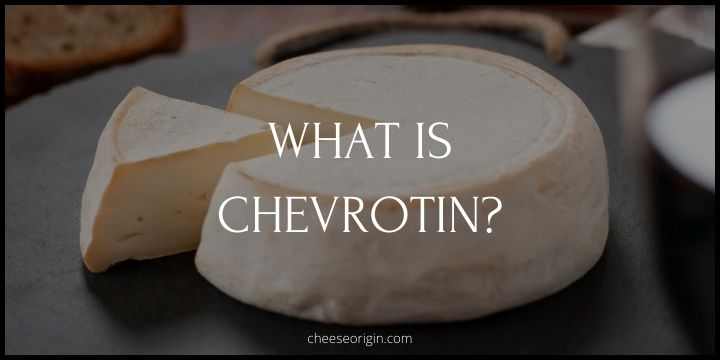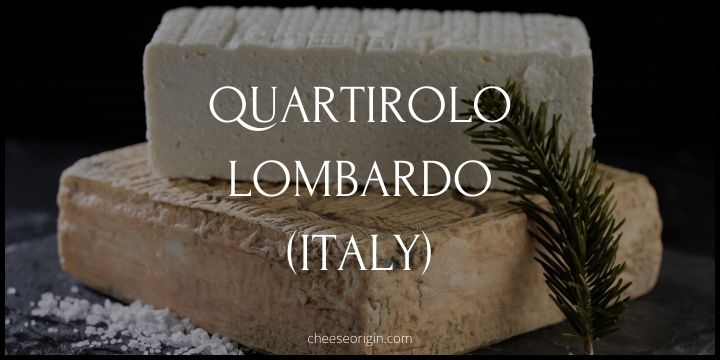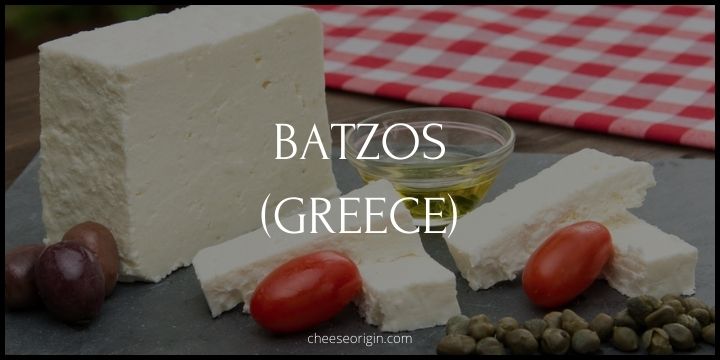What is Mascarpone? A Deep-Dive into the Creamy Italian Cheese
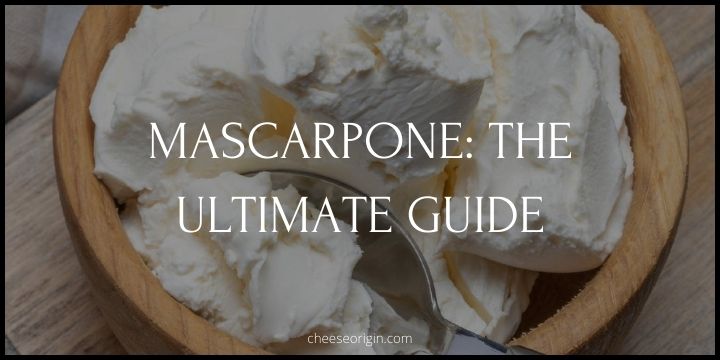
Mascarpone, with its luxuriously smooth texture and subtly sweet flavor, has long been the star ingredient in some of Italy’s most cherished desserts. Yet, there is so much more to this cheese than meets the eye… or the palate.
In this guide, we will embark on an exciting journey that takes us right into the heart of Italy, exploring the origins of this exquisite cheese, understanding its unique characteristics, and unveiling its versatility in the kitchen.
So, whether you’re a seasoned foodie, a curious cook, or simply a lover of all things cheese, prepare to dive into the creamy, dreamy world of Mascarpone. Get ready to discover tips, tricks, and tantalizing pairings that will transform your culinary endeavors and elevate your appreciation for one of Italy’s finest dairy delights.
Quick facts about Mascarpone
| Facts | |
|---|---|
| Origin | Italy, specifically the Lombardy region. |
| Texture | Smooth, creamy, and thick. Somewhat similar to British clotted cream or American cream cheese. |
| Color | Off-white to pale yellow. |
| Taste | Mildly sweet with a slightly tangy undertone. |
| Fat Content | High, typically around 60-75%. This contributes to its rich, creamy texture. |
| Main Ingredient | Cream (typically from cow’s milk). The cream is curdled by adding citric acid or lemon juice. |
| Use in recipes | Famous for its role in Italian desserts like Tiramisu and Cannoli. Also used in savory dishes, spreads, and sauces due to its mild flavor and creamy texture. |
| Shelf life | Short, usually consumed within a few days of production. Store-bought mascarpone should be consumed by the ‘use by’ date on the packaging. |
| Nutrition | High in calories and fat but also a good source of protein, calcium, and vitamins A and B12. |
What is Mascarpone?
Mascarpone is a creamy, rich cheese that originates from Italy. It’s made by curdling heavy cream with citric acid or another acidic substance like lemon juice. The result is a thick, spreadable cheese with a high fat content, typically around 60-75%.
The texture of mascarpone is similar to that of British clotted cream or American cream cheese. Its flavor is mildly sweet and slightly tangy, making it a versatile ingredient in both sweet and savory dishes.
Mascarpone is best known for its role in Italian desserts like Tiramisu and Cannoli, but it can also be used in sauces, spreads, and pasta dishes. Despite its luxurious texture and flavor, mascarpone has a short shelf life and should be consumed within a few days of production.
In terms of nutrition, mascarpone is high in calories and fat but also provides a good source of protein, calcium, and vitamins A and B12.
What does Mascarpone taste like?
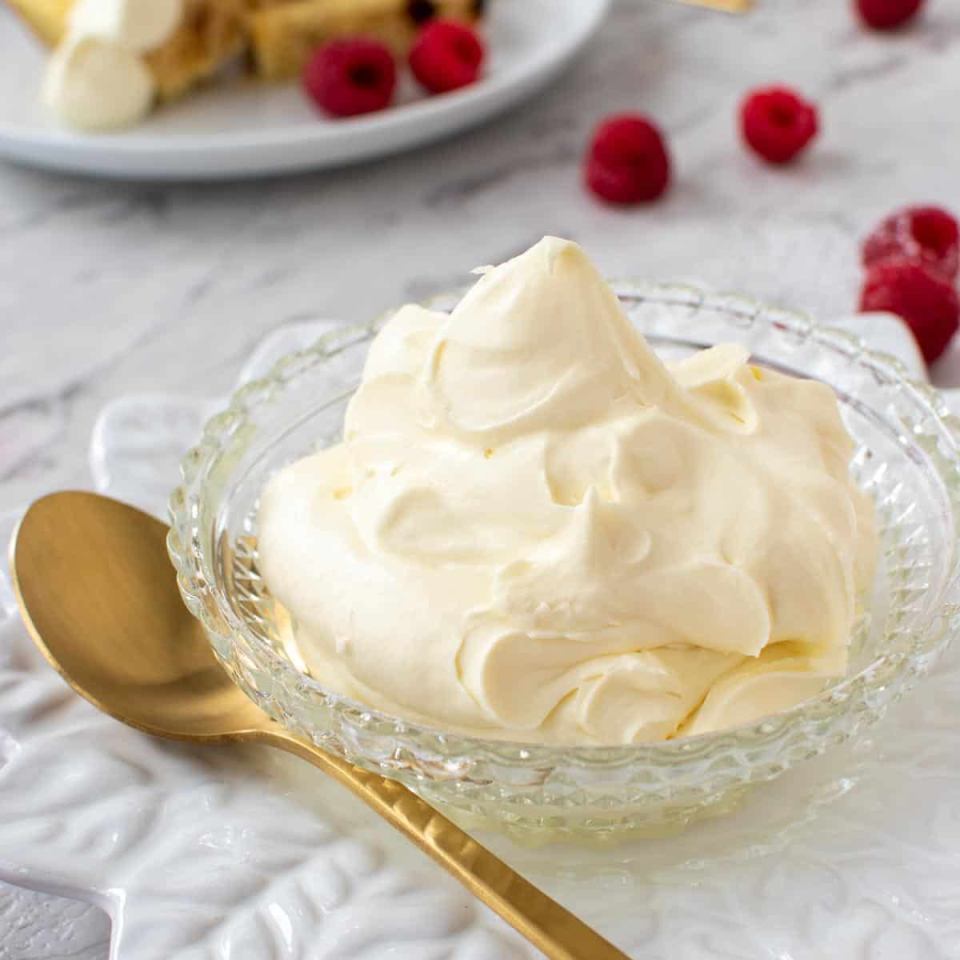
Mascarpone cheese is known for its rich and creamy texture, with a flavor profile that is mildly sweet and slightly tangy. Unlike many other cheeses, it’s not salty or sharp. Its subtle sweetness and smooth consistency make it an excellent base for a variety of dishes, allowing it to blend well with other ingredients without overpowering them.
The mildness of mascarpone’s flavor also makes it a versatile cheese that can be used in both sweet and savory dishes. In sweet recipes, it complements the taste of fruits, chocolate, and coffee, while in savory dishes, it pairs well with herbs, spices, and vegetables.
Overall, the taste of mascarpone is often described as fresh, milky, and slightly buttery, making it a delightful addition to your culinary creations.
Mascarpone tasting notes
- Texture: Mascarpone has a smooth and creamy texture that is thick and spreadable. It’s similar to a dense whipped cream or a softer cream cheese.
- Color: The color of Mascarpone is typically off-white to pale yellow.
- Aroma: Mascarpone has a fresh, milky aroma. It does not have a strong smell, aligning with its overall mild profile.
- Taste: The cheese has a subtly sweet flavor with a slight tanginess. It lacks the salty or sharp notes found in many other cheeses. Some might describe it as slightly buttery or custard-like.
- Aftertaste: Mascarpone leaves a rich, creamy aftertaste. Its high-fat content gives it a lingering presence on the palate.
- Pairings: Due to its mild sweetness, Mascarpone pairs well with fruits, especially berries, as well as sweet ingredients like chocolate and coffee. In savory dishes, it complements herbs, spices, and vegetables.
Is Mascarpone the same as Cream Cheese?
While Mascarpone and cream cheese can appear similar in texture, they are not the same thing and have distinct differences in their production process, taste, and usage.
| Mascarpone | Cream Cheese | |
|---|---|---|
| Origin | Italy | United States |
| Base | Heavy cream | Combination of milk and cream |
| Making Process | Curdled with citric acid or other acidic agents | Curdled with lactic acid |
| Fat Content | High (about 60-75%) | Lower (about 33%) |
| Texture | Very creamy and smooth | Firmer, spreadable |
| Flavor | Mildly sweet, slightly tangy | More pronounced tang, less sweet |
| Uses | Both sweet and savory dishes | Baking, spreads, dips, bagel topping |
| Famous In | Tiramisu, Cannoli | Cheesecake, Bagel Spread |
Mascarpone:
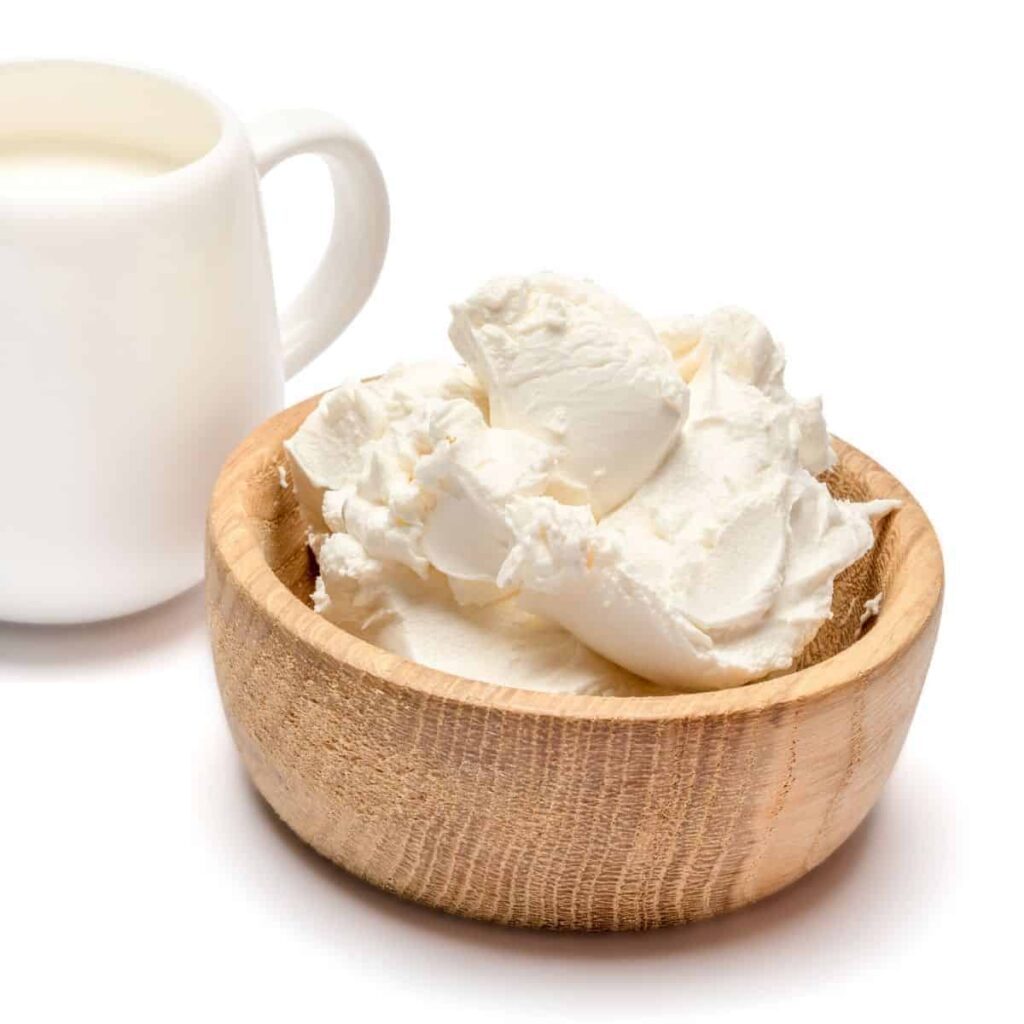
Mascarpone is an Italian cheese made by curdling heavy cream with citric acid or other acidic substances. It has a higher fat content (about 60-75%), which contributes to its rich and creamy texture. The flavor of Mascarpone is mildly sweet and slightly tangy. It’s often used in both sweet and savory dishes, but it’s most famously used in desserts like Tiramisu and Cannoli.
Cream Cheese:
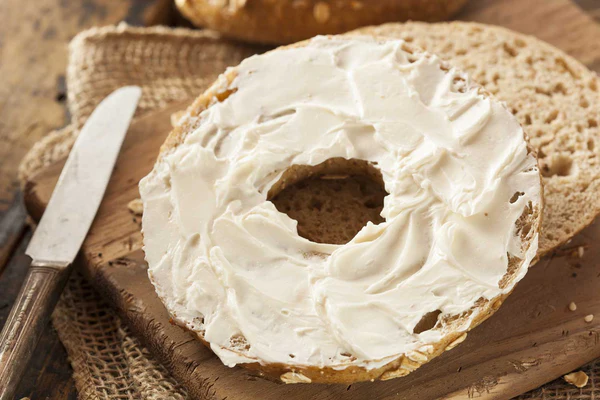
On the other hand, cream cheese is an American product typically made from a combination of cream and milk, which is curdled with lactic acid. It has a lower fat content (about 33%) and a firmer texture than Mascarpone. Cream cheese has a more pronounced tangy flavor and is less sweet compared to Mascarpone. It’s widely used in baking, spreads, dips, and famously as a topping for bagels.
>> Click here to read our in-depth guide on Cream Cheese
In summary, while they can sometimes be used interchangeably in recipes depending on the desired outcome, Mascarpone and cream cheese are different products each with their own unique characteristics.
Is cheesecake better with Mascarpone or Cream Cheese?
Cream Cheese is the traditional choice for making cheesecake. It has a tangy flavor that balances the sweetness of the cake, and its firm texture helps the cheesecake hold its shape. If you’re aiming for a classic, dense, New York-style cheesecake, cream cheese would be the way to go.
Mascarpone, on the other hand, has a milder and slightly sweeter flavor. It’s also creamier and richer due to its higher fat content. Using Mascarpone can result in a lighter, creamier cheesecake, but it might not hold its shape as well as a cream cheese-based cake.
If you prefer a classic, tangy, and firm cheesecake, go with cream cheese. If you’d like a milder, creamier, and more luxurious texture, try Mascarpone.
Some people even use a combination of both to get the best of both worlds.
What is Mascarpone cheese similar to? 10 best substitutes
| Substitute | Explanation |
|---|---|
| Cream Cheese | It has a similar creamy texture and can be used in both savory and sweet dishes. However, it’s tangier than mascarpone. |
| Crème Fraîche | It’s creamy but less fatty than mascarpone with a slight tanginess. Great for sauces and soups where you want a creamy texture without the sweetness. |
| Greek Yogurt | It’s a healthier option with a tangy flavor. It’s not as creamy or rich, so it works well in dishes where mascarpone’s richness could be overwhelming. |
| Ricotta Cheese | It’s grainy and less fatty, but it can be whipped to improve its texture. Best used in pasta fillings and desserts where the graininess won’t be noticeable. |
| Cottage Cheese | This cheese needs to be blended to achieve a smooth texture. It’s low in fat and has a mild flavor, making it a good substitute in savory dishes. |
| Sour Cream | This is a good substitute because of its creamy texture. However, it has a strong sour taste which might alter the flavor profile of your dish. |
| Silken Tofu | This is a vegan substitute that can mimic the creaminess of mascarpone. It has a neutral flavor, making it a good base for both sweet and savory dishes. |
| Cashew Cream | Another vegan option, cashews blended with water can create a creamy, rich texture similar to mascarpone. It has a slightly nutty flavor. |
| Heavy Cream | Mixed with butter, it can mimic the high fat content and creaminess of mascarpone, suitable for desserts and sauces. |
| Monterey Jack Cheese | This cheese is a good substitute in savory dishes due to its mild flavor and creamy, semi-soft texture. It melts well, which makes it suitable for cooking. |
What is special about Mascarpone?

- Origin: Mascarpone is a traditional Italian cheese, originating from the Lombardy region of Northern Italy. It’s a key ingredient in many classic Italian dishes, most notably tiramisu.
- Creaminess: Mascarpone is incredibly creamy and smooth, thanks to its high-fat content. It is made by curdling cream with citric acid or acetic acid, which results in a thick, rich, and velvety cheese.
- Versatility: Its mildly sweet and slightly tangy flavor makes it versatile for both savory and sweet recipes. You can use it in desserts like cheesecake and fruit tarts, or in savory dishes like risotto or pasta sauces.
- Ease of Making at Home: Unlike many types of cheese, mascarpone can be easily made at home with just two ingredients: cream and lemon juice.
- Texture: Its texture is unique among cheeses. While it’s technically classified as a cheese, its high cream content gives it a consistency closer to that of British clotted cream or French crème fraîche.
- Subtle Flavor: Mascarpone has a subtler flavor than many other cheeses, which allows it to enhance the flavors of other ingredients without overpowering them.
Can I use Philadelphia instead of Mascarpone?
Yes, you can use Philadelphia cream cheese as a substitute for Mascarpone in many recipes. Both cheeses have a similar creamy texture.
However, there are 3 things to keep in mind:
- Flavor: Philadelphia cream cheese has a tangier flavor compared to the mild and slightly sweet flavor of Mascarpone. Depending on the recipe, this might slightly alter the taste of your dish.
- Fat Content: Mascarpone has a higher fat content than Philadelphia cream cheese, making it richer and creamier.
- Consistency: While both are spreadable, Mascarpone is often a bit softer and more pliable than cream cheese.
In recipes where the flavor and texture of Mascarpone are crucial (like Tiramisu), substituting it with cream cheese may not yield the same results. But in recipes where Mascarpone is not the star ingredient, such as in sauces or fillings, Philadelphia cream cheese can work quite well.
Why is Mascarpone so expensive?
Mascarpone cheese tends to be more expensive than other cheeses due to several factors:
- Ingredients: Mascarpone is made from heavy cream, which is more expensive than the milk used for many other types of cheese.
- Production Process: The process of making Mascarpone is more labor-intensive and time-consuming than the production of many other types of cheese.
- Fat Content: Mascarpone has a very high fat content, which contributes to its rich and creamy texture, but also its higher price tag.
- Import Costs: If you’re buying authentic Italian Mascarpone, there might be additional import costs that contribute to its higher price.
- Perceived Luxury: Mascarpone is often perceived as a luxury item, particularly in non-Italian cultures. This perception can drive up the price.
However, it’s worth noting that you can make your own Mascarpone at home relatively easily, which may be a less expensive option.
How to Make Homemade Mascarpone Cheese
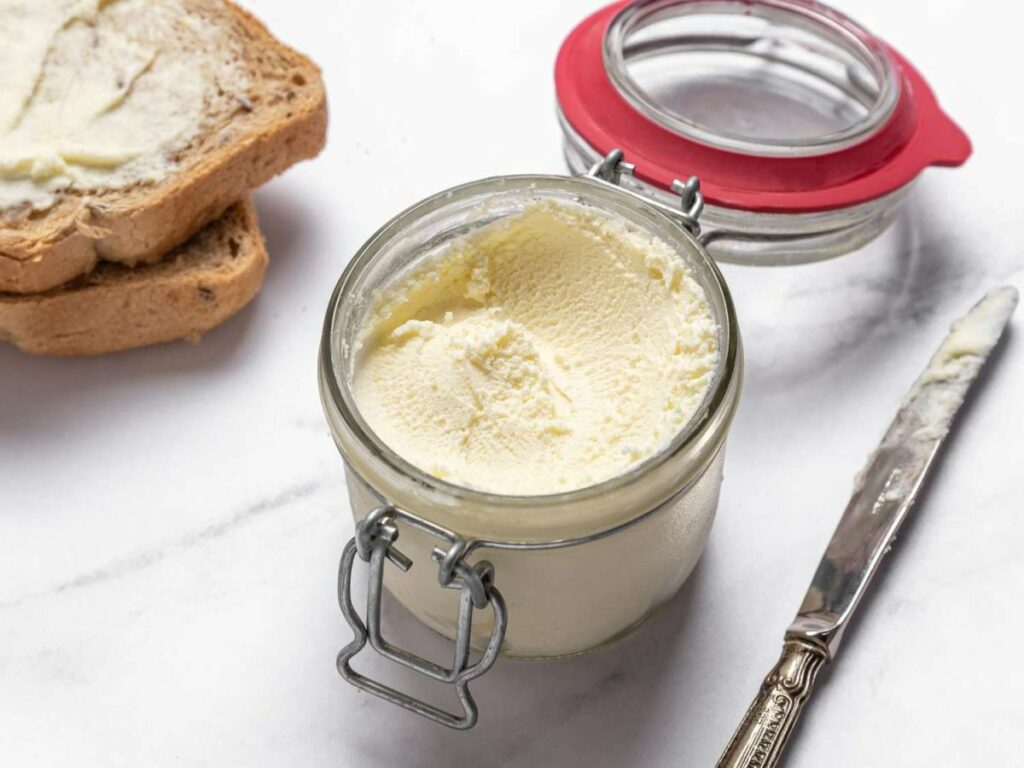
Here’s a comprehensive guide on how to make high-quality, homemade Mascarpone using simple ingredients found in any kitchen.
Ingredients:
- 2 cups of heavy cream (not ultra-pasteurized)
- 1 tablespoon of fresh lemon juice
Equipment Needed:
- A large heatproof bowl
- A saucepan
- A thermometer
- Cheesecloth or a fine mesh strainer
- A rubber spatula
Instructions:
- Heat the Cream: Pour the heavy cream into a large saucepan and place it over medium heat. Heat the cream to 190°F (88°C), stirring occasionally to prevent the cream from scorching at the bottom of the pan. Use a thermometer to monitor the temperature.
- Add the Lemon Juice: Once the cream reaches the correct temperature, add the lemon juice and reduce the heat to low. Stir gently until the mixture starts to curdle. This should take about 5 minutes.
- Cool Down: Remove the saucepan from the heat and let the mixture cool down to room temperature. The cream should thicken further as it cools.
- Strain the Mixture: Line a strainer with four layers of cheesecloth and set it over a large bowl. Pour the cooled cream mixture into the cheesecloth. Fold the cheesecloth over the top and refrigerate overnight or for at least 8 hours.
- Store the Cheese: After the straining process, the result in the cheesecloth is Mascarpone cheese. You can transfer it to an airtight container and store it in the refrigerator. It should last for about one week.
Tips for the Best Results:
- Temperature Control: Ensure the cream doesn’t boil but reaches the correct temperature of 190°F (88°C). Too high a temperature can cause the cream to burn or the proteins to seize up and create a grainy texture.
- Quality Cream: Use the best quality cream you can find. Avoid ultra-pasteurized cream as it may not be set properly.
- Straining Time: Don’t rush the straining process. The cheese needs time to drain and firm up.
Serving Suggestions:
Mascarpone cheese is extremely versatile and can be used in both sweet and savory dishes. Here are a few ideas:
- Sweet: Use Mascarpone in desserts like tiramisu, cheesecake, or simply serve it with fresh berries and a drizzle of honey.
- Savory: Stir it into risotto, pasta sauces, or use it as a spread on a gourmet sandwich.
Favorite Recipe:
One of my favorite recipes using Mascarpone cheese is classic Tiramisu. The creamy Mascarpone pairs perfectly with the strong espresso and cocoa flavors in this iconic Italian dessert.
Remember, homemade Mascarpone may have a slightly different texture or taste than store-bought versions, but the freshness and satisfaction of making it yourself will make your dishes even more special. Enjoy!
Is Mascarpone similar to Brie?
Mascarpone and Brie are both types of cheese, but they have distinct differences:
| Factor | Mascarpone | Brie |
|---|---|---|
| Origin | Italy | France |
| Texture | Smooth and creamy, similar to custard or cream cheese | Soft and creamy interior with a firm, edible rind |
| Flavor | Mildly sweet and rich | Savory, mild, buttery, with a slight mushroom-like taste |
| Production | Made from cream and an acid (like lemon juice) that coagulates the cream | Made from cow’s milk and aged to develop its characteristic rind and flavor |
| Common Uses | Used in desserts like Tiramisu, or mixed into sauces to add creaminess | Served on cheese boards, baked and served with bread, or used in sandwiches |
| Color | White | Pale yellow with white rind |
| Fat Content | High (about 40-60%) | Moderate (about 20-30%) |
Please note that despite these differences, both Mascarpone and Brie are enjoyed for their creamy textures and distinct flavors. However, they aren’t typically interchangeable in recipes due to their unique characteristics.
>> Click here to read our in-depth guide to Brie
Is Mascarpone a healthy cheese?
Mascarpone cheese, while delicious and versatile in many recipes, is not generally considered a “healthy” cheese due to its high fat and calorie content.
Like any food product, Mascarpone can be enjoyed as part of a balanced diet, but it’s essential to consume it in moderation due to its high-calorie and fat content.
If you’re looking for healthier alternatives, there are substitutes available that may provide similar flavor and texture with fewer calories and less fat.
Here are 6 cheeses that are generally considered healthier than Mascarpone due to their lower fat and calorie content:
- Cottage Cheese: High in protein and calcium but low in fat and calories.
- Feta Cheese: Lower in fat and calories than many other cheeses, and provides a good source of B vitamins, calcium and phosphorus.
- Mozzarella (Part-Skim): Contains fewer calories and fat than some other cheeses. It’s also rich in calcium and protein.
- Ricotta (Part-Skim): Lower in fat and calories, and is a good source of protein, calcium and vitamin A.
- Swiss Cheese: Low in fat compared to many other types of cheese, and high in Vitamin B12 and calcium.
- Parmesan Cheese: While high in sodium, it’s rich in protein and calcium, and because of its strong flavor, often less is needed in recipes.
Mascarpone nutrition facts
| Nutrient | 1 Tablespoon (28g) |
|---|---|
| Calories | 120 |
| Total Fat | 14g |
| Sodium | 10mg |
| Carbohydrates | 0g |
| Fiber | 0g |
| Sugars | 0g |
| Protein | 2g |
| Calcium | 40mg (4% RDI) |
| Vitamin A | 134.75µg (17% RDA/RI) |
What pairs well with Mascarpone?
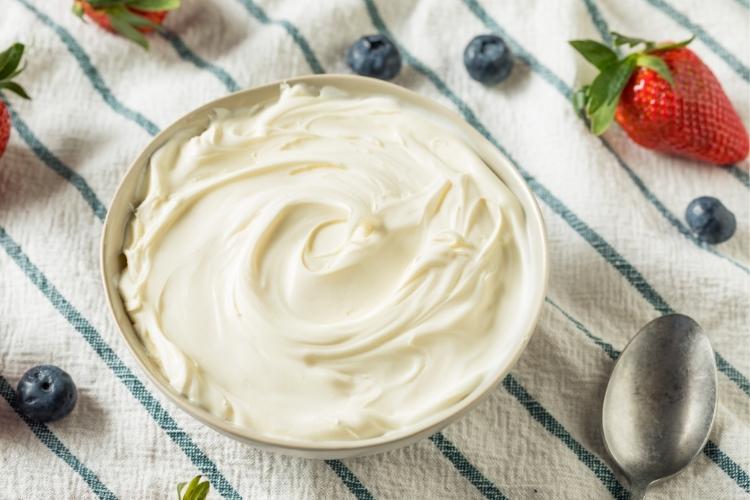
Food that goes well with Mascarpone
| Category | Foods |
|---|---|
| Vegetables | Asparagus, Mushrooms, Butternut Squash, Roasted Tomatoes |
| Fruits | Berries (Strawberries, Raspberries, etc.), Bananas, Oranges |
| Meats | Prosciutto, Bacon, Sausage |
| Desserts/Sweets | Honey, Carrot Cake, Lemon Pie, Cupcakes, Fruit Blintzes, Chocolate, Ice Cream Sandwiches |
| Breads/Cereals | Pasta, Polenta, Tortilla, Puff Pastry |
| Soups | Cream of Mushroom, Cream of Broccoli, Cream of Potato |
Also read: What Fruit Goes on a Charcuterie Board?
Beverage that goes well with Mascarpone
| Category | Beverages |
|---|---|
| Alcoholic | Marsala Wine, Red Wine, Rum, Cognac, Chardonnay, Pinot Gris, Prosecco |
| Cocktails | MacSwiney (Cognac and Crème de Noyaux), Bellini (Sparkling Wine and Peach Puree) |
| Coffee-Based | Tiramisu Latte |
Also read: Best Wine and Cheese Pairings: The Ultimate Guide
The History and Origin of Mascarpone
Mascarpone is a type of cheese that originated during the Middle Ages in Lombardy, a region in the northern part of Italy known for its rich dairy and agricultural heritage. Specifically, it was first made in the area between Lodi and Abbiategrasso, south of Milan. This dates back to probably the late 16th or early 17th century.
The name “Mascarpone” has interesting roots. Some believe its name originates from the Spanish words for “better than good,” though it is more likely derived from the Lombard word for ricotta, “mascherpo”.
This creamy cheese quickly became a staple in Italian cuisine and is now globally recognized as a key ingredient in many dishes, most notably in Tiramisu, a dessert that originated in Treviso in 1800.
Frequently Asked Questions
1. Is Mascarpone sweet or sour?
Mascarpone is both sweet and sour, though it leans more towards a mild sweetness. It has a rich, smooth, and buttery flavor with a slight tanginess that is reminiscent of yogurt or sour cream, but it is milder and less acidic than cream cheese.
2. Can I eat Mascarpone by itself?
Yes, you can absolutely eat Mascarpone by itself. Its creamy texture and mild, slightly sweet flavor make it enjoyable to consume on its own. However, it’s also versatile and pairs well with a variety of foods, such as fruits, biscuits, or bread. It’s commonly used as an ingredient in desserts like tiramisu or mixed into savory dishes for added richness. But if you prefer to savor its taste solo, feel free to do so!
3. How to store Mascarpone?
Mascarpone cheese should be stored in the refrigerator to maintain its freshness and prevent spoilage. Here are some steps to properly store mascarpone:
- Seal It Properly: If your mascarpone comes in a tub, make sure to seal it tightly after every use. If you’ve transferred it into another container, ensure that the container is airtight to prevent exposure to air, which can dry out the cheese.
- Keep It Cold: Store your mascarpone in the coldest part of your fridge, usually at the back, away from the door. The temperature should ideally be between 35°F and 40°F (1.6°C – 4.4°C).
- Use Within a Week: Mascarpone is a fresh cheese, so it’s best consumed within a week of opening. Always check the expiry date on the packaging before consuming. If it smells sour or looks discolored, it’s best to discard it.
- Don’t Freeze: Unlike some other cheeses, mascarpone doesn’t freeze well. Freezing can alter its texture, making it grainy and less creamy when thawed.
Remember, always use a clean utensil when scooping out mascarpone to avoid introducing bacteria that might lead to premature spoilage.
Also read:
- Menonita Cheese: A Staple in Northern Mexican Cuisine
- All About Roquefort: An Insider’s Guide to the King of Blue Cheese
- Asiago Cheese: An In-depth Exploration of Nutrition and Taste
- The Ultimate Guide to Jarlsberg: Delicious and Nutritious
- Ricotta Guide: All You Need to Know About This Versatile Cheese
- The Ultimate Guide to Chèvre: Exploring Goat Cheese
- The Ultimate Guide to Kasseri: A Taste of Tradition
